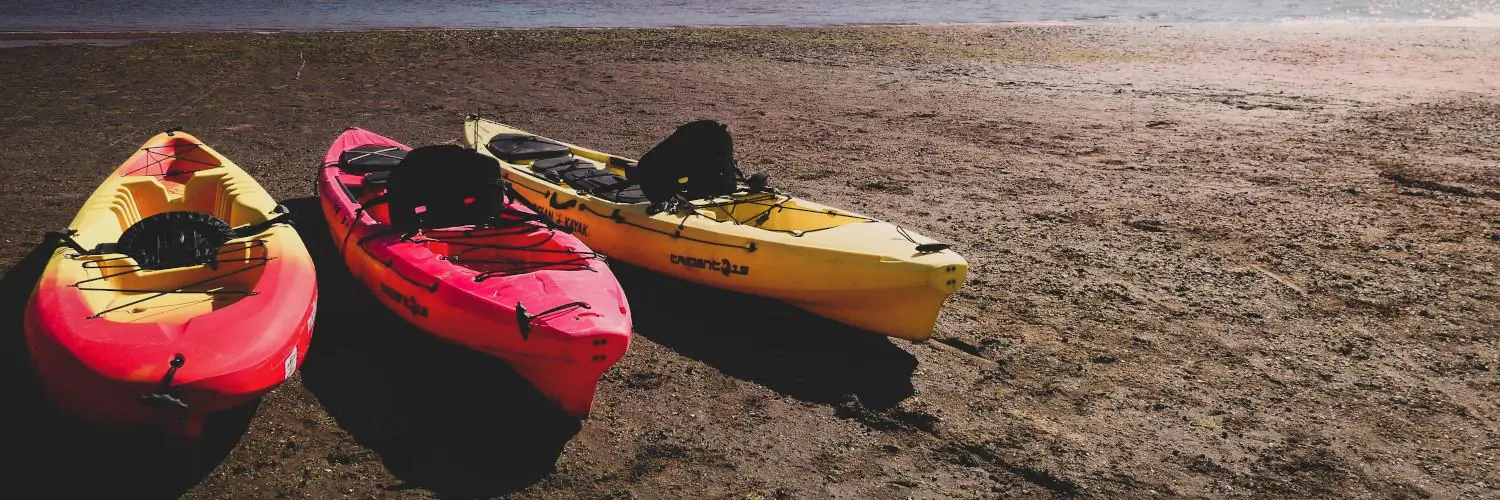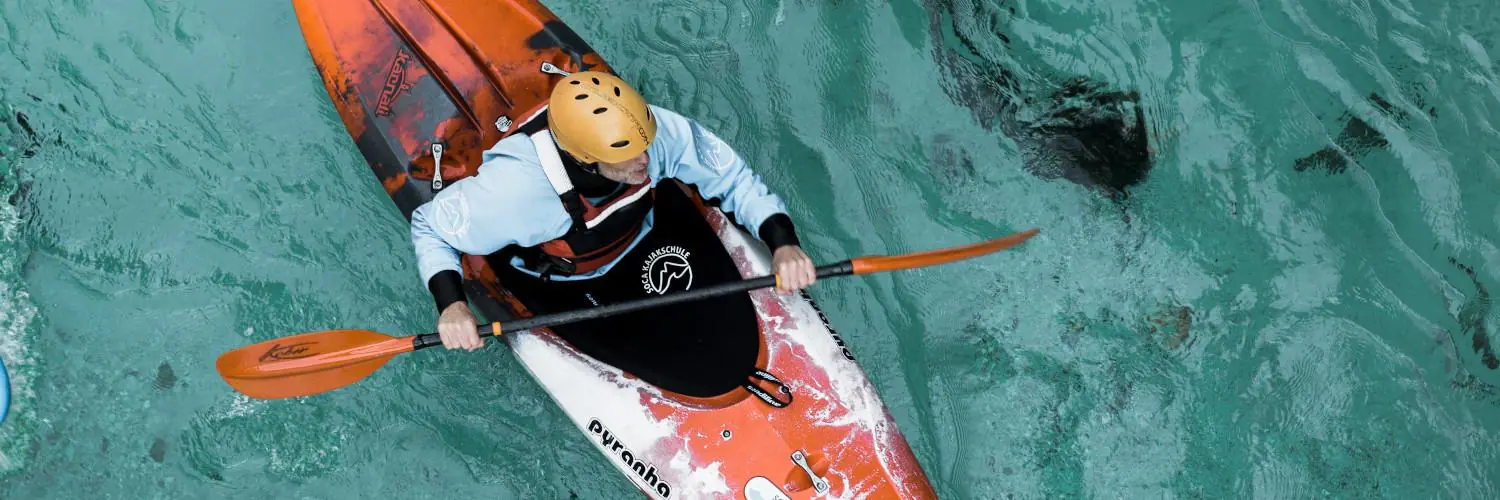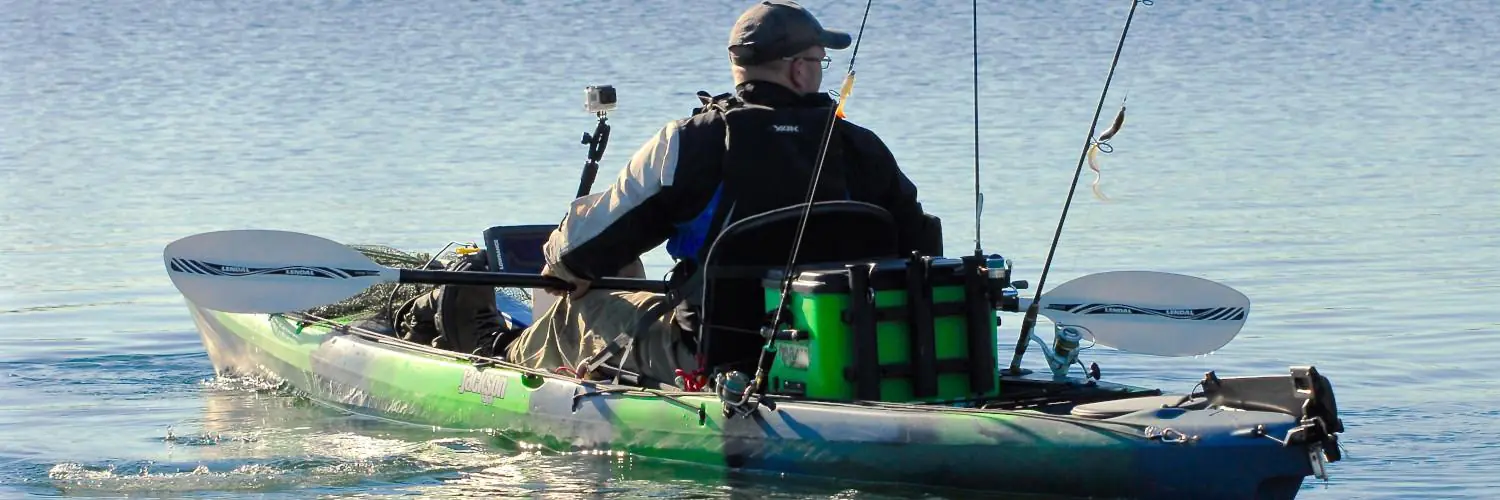Kayaking is widely enjoyed by individuals of all ages, offering both thrilling adventure and peaceful communion with nature. Regarding age requirements for kayaking, there are no federal laws in the United States that dictate a strict minimum age. The decision is largely left to the discretion of states and kayak rental companies. While most states allow individuals of all ages to participate in kayaking, they do often mandate that minors wear life jackets and, in some cases, be accompanied by an adult during the activity.
The sport is accessible to a broad audience, but the age at which a person can go kayaking alone or rent a kayak varies. Regulations and policies may hinge on local laws, company rules, and safety practices, which aim to ensure the wellbeing of younger paddlers. In some states, kayak registration requirements also come into play, defining additional rules for kayakers to follow. These requirements frequently address the need for adult supervision and the use of personal flotation devices for children under a certain age, ensuring that even the youngest participants can enjoy the sport safely.
Table of Contents
Understanding Kayaking Age Requirements
Kayak age requirements vary by state and are influenced by safety considerations and legal regulations. These requirements ensure that kayakers of different age groups can enjoy the activity while maintaining safety on the water.
Legal Age Restrictions
In most states, there are no specific laws dictating the minimum age to kayak alone. However, rental companies often set their own minimum age limit, typically 12 to 13 years for solo rentals, with the stipulation that minors under 18 must have a parent or guardian present.
Safety Considerations for Minors
Safety is paramount when it comes to minors kayaking. It is advised that children under the age of 5 always have adult supervision. Furthermore, children under 10 should only kayak on their own in calm waters, and it is strongly recommended that everyone under the age of 18 wears a life jacket.
Parent or Guardian Roles
The parent or guardian plays a critical role in youth kayaking. They must supervise young kayakers, help them understand safety practices, and ensure that they follow all local laws and regulations on the water.
State-Specific Regulations
- California: Requires anyone under 13 to wear a USCG-approved life vest.
- Michigan: Registration is required for all non-motorized watercraft over 10 feet.
- Alaska, Florida: No specific state-wide requirements, but local rules may apply.
Exceptions to Age Policies
Some states and local jurisdictions may offer exceptions to age policies for programs like educational tours or supervised youth group activities. It’s important to inquire locally for such exceptions.
Required Safety Equipment
When kayaking, it’s vital to have the appropriate safety equipment on board. Adhering to state and federal regulations ensures both compliance and safety on the water.
Life Jackets and PFDs
Personal Flotation Devices (PFDs) are mandatory in kayaking. Adults must have a PFD on board, and it is strongly recommended to wear them at all times. For children, the rules are stricter: they are often required to wear a life jacket. Life jackets should be U.S. Coast Guard-approved, fit correctly, and be suitable for the kayaker’s weight and water conditions.
Paddling Gear Essentials
Every kayaker should carry the following essential items:
- Paddle: Ensure it’s suitable for the kayak’s size and the individual’s strength.
- Whistle or Sound-Producing Device: For signaling in case of an emergency.
- Bilge Pump or Bailer: To remove water from the cockpit.
- Rescue Throw Bag: Essential for towing a kayaker in distress.
Safety Gear for Children
For kids, safety gear includes:
- Life Jackets/PFDs: Must be the correct size and weight rating.
- Whistle: Attached to the PFD for easy access.
Visibility and Distress Signaling
Visibility devices are crucial, particularly for low-light conditions. Kayakers are advised to carry:
- Visual Distress Signals (VDS): Flares or electric distress lights to signal for help.
- Reflective Material: On both the PFD and the kayak to enhance visibility.
Legal requirements for VDS vary. For coastal waters, carry USCG-approved nighttime VDS and consider daytime distress signaling options like orange smoke flares.
Kayaking Skills and Experience
When embarking on kayaking activities, one must evaluate both the kayaker’s technical abilities and their experience in various types of watercraft. Proficiency in paddling, as well as understanding the nuances between canoeing and kayaking, sets the foundation for a safe and enjoyable experience on the water.
Assessing Paddling Skills
A kayak requires precise control and balance, which is rooted in one’s paddling skills. Beginners should be able to perform controlled strokes and maintain the kayak’s stability. They should master the forward stroke, the sweep stroke for turning, and the reverse stroke for slowing down. These foundational skills ensure that the kayaker can navigate calm waters and gradually progress to more challenging conditions. A checklist for assessing paddling skills might include:
- Controlled forward and reverse strokes
- Effective turning maneuvers
- Ability to stop quickly and safely
- Maintenance of balance in varying water conditions
Canoe Vs Kayak Experience
Canoe and kayak handling differ significantly due to their design and paddling techniques. A canoe is often more open and paddled with a single-blade paddle, while a kayak is enclosed and uses a double-bladed paddle. The experience in a canoe might not directly translate to proficiency in a kayak because the latter requires the paddler to have a stronger sense of balance and to use torso rotation for efficient paddling. Individuals with canoeing experience will need to adapt to the sitting position and paddling style of kayaking. Key differences include:
- Body positioning: sitting low with legs extended in a kayak vs. kneeling or sitting on a bench in a canoe
- Paddling technique: double-bladed paddle in kayaks requires alternating strokes and torso rotation
- Watercraft control: kayaks are typically more agile but demand greater balance control
Navigating Waterway Regulations
When kayaking, it’s essential to understand the specific regulations that govern waterways, which can include boating laws, the need for registration, and rules for navigating restricted areas.
Boating and Paddling Laws
Each state has its own set of boating and paddling laws, which kayakers must adhere to. These often dictate the required safety equipment, age and life jacket requirements, and how to properly navigate waterways. In some states, the Department of Natural Resources is responsible for these regulations, ensuring the safety of all watercraft users.
Registration and Documentation
Documentation is a key aspect of watercraft regulation. Kayak registration is required in several states if the boat is over a certain length. For instance, non-motorized boats longer than 10 feet generally need to be registered. This process is typically overseen by the state’s department of motor vehicles or a similar entity, and failure to register a kayak can result in fines.
| Watercraft Type | Registration Requirement |
|---|---|
| Motorized watercraft | Required regardless of length |
| Non-motorized > 10 feet | Required in some states |
| Non-motorized < 10 feet | Typically not required |
Navigating Restricted Areas
Local laws may designate certain areas as restricted for kayaking and other water activities. Boaters must be aware of these restrictions, which can pertain to environmental conservation zones or areas of heavy marine traffic. Additionally, federal regulations, like those from the US Coast Guard, may also impact where and how kayakers can navigate.
In summary, kayakers are urged to familiarize themselves with the local and federal regulations, including kayaking rules and restricted area rules, to ensure compliance and safety on the water.
Understanding Boating Under the Influence
Boating under the influence (BUI) is a serious offense with regulations designed to maintain safety on water. Just as driving under the influence (DUI) is illegal on the roads, operating a kayak or any water vessel under the influence of alcohol is similarly prohibited and carries significant consequences.
BUI, DUI, and Safety on Water
Boating under the influence is treated with equal severity as driving under the influence, given the similar risks it presents. Boaters are expected to helm their vessels responsibly; the introduction of alcohol impairs judgment, coordination, and reaction times, all of which are critical for maintaining safety on water. States enforce these rules strictly, and violators can face:
- Legal consequences: including fines, jail time, or suspension of boating privileges.
- Increased liability: both legally and financially in the event of an accident.
- Insurance ramifications: which may include higher premiums or denial of claims.
Blood Alcohol Content Regulations
The legal blood alcohol concentration (BAC) limit for boating is typically set at 0.08% across most states, aligning with the BAC limit for road vehicle operation. To enforce these regulations, authorities may perform sobriety tests on boat operators suspected of BUI. Violations of BAC limits will result in legal action that not only affects boating records but can also have broader implications on one’s driver’s license and insurability, underscoring the importance of sober boating.
Types of Kayaks and Age Suitability
Selecting a kayak suitable for a paddler’s age requires considering the type of kayak and its intended use. This section examines specific kayak types and age-related factors to consider.
Tandem Kayak Considerations
Tandem kayaks are an excellent choice for younger paddlers accompanied by an adult. They allow for two individuals to share the workload, making it less taxing for children not yet capable of paddling long distances alone. These kayaks often have a weight distribution that promotes stability, important for ensuring the safety of inexperienced or younger kayakers.
Motorized and Non-Motorized Vessels
Non-motorized vessels like single kayaks and canoes do not generally have legal age requirements for operation. However, motorized watercraft registration is mandatory for boats over 10 feet, making the discussion of age more relevant due to the increased responsibility and potential legalities. These regulations have slight variations state by state, with non-motorized boats under 10 feet typically exempt from registration.
Inflatable Kayak Options
Inflatable kayaks offer a lightweight and flexible alternative to hardshell kayaks, often chosen for their portability and ease of storage. They are appropriate for all ages, but it’s always recommended that children are supervised while paddling. With the proper fitting of a Type I Personal Flotation Device (PFD), inflatable kayaks can be a safe option for younger enthusiasts looking to explore calmer waters.
Kayak Rental and Age Limitations
When it comes to kayak rental, age restrictions can vary widely depending on the location and individual rental company policies. This section will discuss the common age limitations set by rental companies and how they are enforced.
Rental Company Policies
Minimum Age Limit: Rental companies typically impose a minimum age limit for those looking to rent kayaks. The age requirement can range from 12 to 18 years. For example, California rental companies may set the minimum age at 16, while in Florida, individuals under 18 must be accompanied by an adult.
- Underage Kayakers: Many rental operators require that those under the age of 18 have a parent or guardian present. Additionally, life jackets are often mandatory for underage kayakers as a safety precaution.
Age Limit Enforcements at Rentals
Life Jackets: To comply with safety laws, rental companies enforce that all underage kayakers wear a life jacket.
Adult Supervision:
- In states where supervision is required, rental companies will verify that an adult is present before allowing the rental to proceed.
- This rule ensures both compliance with state laws and enhances safety for younger individuals on the water.
Age Verification: Rental businesses will check a valid ID to confirm the age of renters to ensure they meet the set age requirements for kayak rental.
Outdoor Adventure Planning
Proper planning for a kayaking trip is essential for a safe and enjoyable adventure. One should account for the dynamic nature of outdoor activities, crafting a detailed checklist and packing strategy, planning for potential camping scenarios, and considering the physical demands of the trip.
Trip Planning and Checklist
When planning a kayaking excursion, one should first assess the route, pinpointing entry and exit points, rest stops, and potential hazards. A comprehensive checklist should include:
- Personal items: Life jacket, whistle, water shoes.
- Navigation tools: Waterproof map, compass, GPS device.
- Emergency kit: First-aid supplies, multi-tool, waterproof matches.
Physical strength is also a consideration; paddlers must ensure they are adequately prepared for the journey, with practice sessions and a clear understanding of their limits.
Packing for Kayaking Trips
For packing, kayakers should optimize their gear list for efficiency and necessity. They must balance the weight and maintain the kayak’s stability. Here is an example packing list:
- Essentials: Sun protection (hat, sunglasses, sunscreen), insect repellent.
- Hydration: Water bottle, purification tablets or a filtration system.
- Nutrition: Energy bars, easy-to-prepare meals, utensils.
Keen attention to the personal skill level and the environment will dictate additional gear, with safety as the top priority.
Camping and Overnight Kayaking
For those intending to camp during their trip, kayakers must be equipped for overnight stays in nature. Critical camping gear includes:
- Shelter: Tent or bivy sack, sleeping bag rated for the expected temperatures.
- Cooking: Portable stove, fuel, lightweight cookware.
Travelers must abide by the “Leave No Trace” principles, ensuring their presence does not negatively impact the natural environment. Ensuring appropriate gear and supplies for camping can make a significant difference in the experience of overnight kayak trips.








